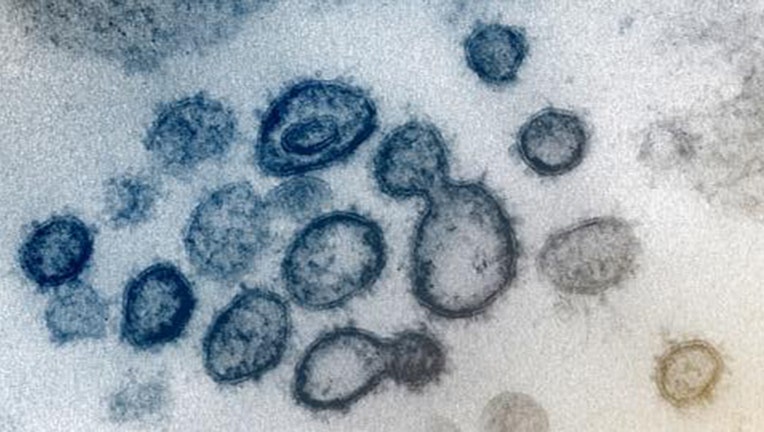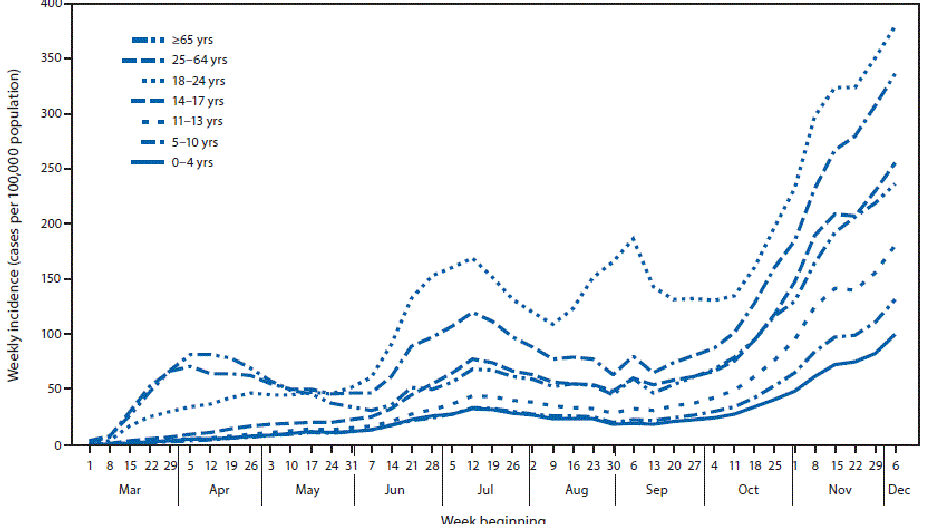COVID-19 cases in children rise, parallel trends seen among adults, CDC report says

A transmission electron microscope image shows SARS-CoV-2, also known as the 2019 novel coronavirus, which causes COVID-19, isolated from a patient in the United States. Note the crown-like spikes on the outer edge of the virus, hence the term "coron (NIAID-RML)
LOS ANGELES - Over the past year, studies have consistently shown that children and adolescents have lower incidence and fewer severe COVID-19 cases than adults. However, a new report shows that cases in children and young adults have increased since summer 2020 with trends among younger age groups paralleling those among adults.
The electronic laboratory data, reported to the Centers for Disease Control and Prevention (CDC) and released Wednesday, analyzed COVID-19 incidence among U.S. children, adolescents, and young adults (ages 0–24 years).
The report found that weekly incidence (cases per 100,000) increased with age and was highest during the final week of the review period — the week of December 6 — among all age groups.
"Our analysis confirmed what we have been seeing and hearing about the risks of COVID-19 among children, adolescents, and young adults," Erin Sauber-Schatz, a community intervention and critical populations task force lead and co-author of this report, told FOX TV Stations.
In addition, trends in weekly reported incidence for children and adolescents aged 0–17 years tracked consistently with trends observed among adults since June, with both incidence and positive test results tending to increase since September.

COVID-19 weekly incidence by age group — United States, March 1–December 12, 2020
"To enable safer in-person learning, schools and communities should fully implement and strictly adhere to multiple mitigation strategies, especially universal and proper mask wearing, to reduce both school and community COVID-19 incidence to help protect students, teachers, and staff members from COVID-19," the report’s authors wrote.
In general, trends in incidence and percentage of positive test results among preschool-aged children (0–4 years) and school-aged children and adolescents (5–17 years) paralleled those among adults throughout the summer and fall, including during the months that some schools were reopening or open for in-person education.
In contrast, incidence among young adults (aged 18–24 years) was higher than that in other age groups throughout the summer and fall, with peaks in mid-July and early September that preceded increases among other age groups, suggesting that young adults might contribute more to community transmission than do younger children.
RELATED: COVID-19 vaccines: Rollout in US sparks new set of problems
Still, reported incidence and positive test results among children aged 0–10 years were consistently lower than those in older age groups.
"Lower incidence among younger children and evidence from available studies suggest that the risk of COVID-19 transmission associated with reopening child care centers and elementary schools might be lower than that for reopening high schools and institutions of higher education," Sauber-Schatz wrote.
CDC recommends that K–12 schools be the last settings to close after all other mitigation measures have been employed and the first to reopen when they can do so safely.
RELATED: Companies offer financial incentives to encourage COVID-19 vaccination
"Schools provide a structured environment that can support adherence to critical mitigation measures to help prevent and slow the spread of COVID-19. However, when community transmission is high, cases in schools should be expected, and as with any group setting, schools can contribute to COVID-19 transmission, especially when mitigation measures, such as universal and proper masking, are not implemented or followed," Sauber-Schatz said. "We can all do our part to help reduce community transmission by properly wearing a mask, watching our distance, washing our hands, avoiding gatherings, and getting vaccinated. Our kids, teachers, and school staff are counting on us to do these things so they can get back into the classroom safely."

